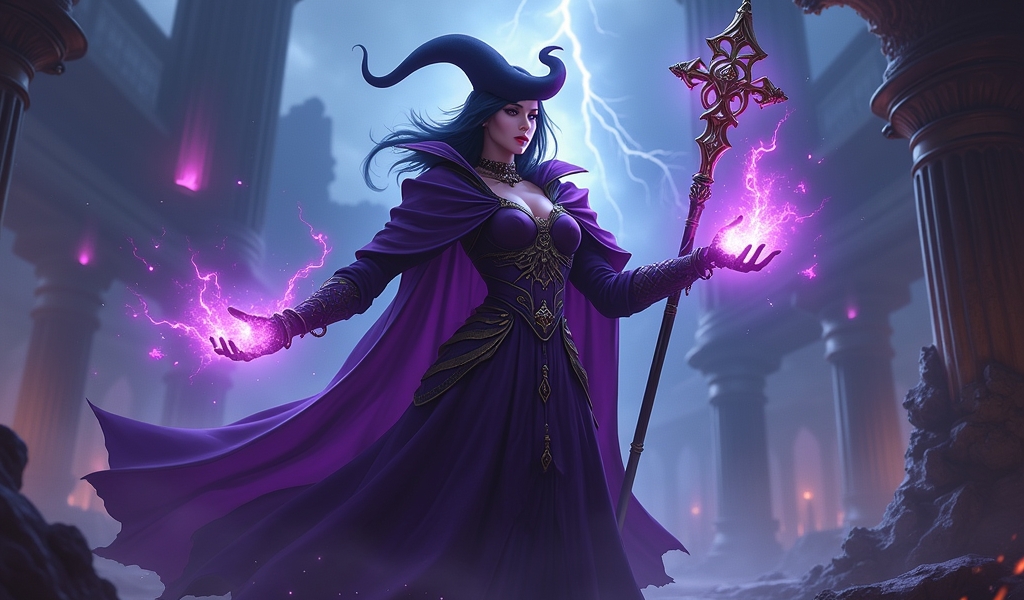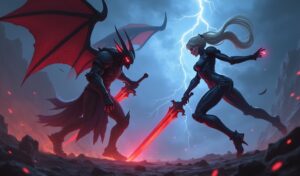Overview
How to play LeBlanc effectively requires mastering her deceptive kit of combos, clone management, and strategic mobility for devastating burst damage. The article provides five essential tips for success: mastering the W-Q-E combo for trades, utilizing clones to confuse opponents, roaming to snowball other lanes, positioning strategically in teamfights, and adapting build paths to match game conditions.
Table of Contents
Introduction to LeBlanc
Learning how to play LeBlanc effectively can transform your mid lane experience in League of Legends. As one of the most elusive and deadly assassins in the game, LeBlanc rewards skilled players with incredible burst damage and unmatched mobility. However, her high skill ceiling means mastering her deceptive playstyle requires dedication and practice.
In this comprehensive guide, we’ll explore five essential tips to help you master The Deceiver and climb the ranked ladder. Whether you’re just picking her up or looking to refine your skills, these strategies will elevate your LeBlanc gameplay. Unlike other mid laners such as Kassadin who scales into late game, LeBlanc thrives on early game dominance and snowballing her advantage.
Let’s dive into what makes LeBlanc such a formidable champion and how you can leverage her unique kit to deceive and destroy your opponents.
Understanding LeBlanc’s Abilities
Before jumping into advanced techniques, you need to understand LeBlanc’s abilities and how they synergize. Her kit revolves around quick combos and deception:
- Passive: Mirror Image – When LeBlanc falls below 40% health, she becomes invisible for 0.1 seconds and creates a controllable clone that deals no damage and lasts for 8 seconds.
- Q: Sigil of Malice – LeBlanc fires a projectile that deals magic damage and marks the target. If the mark is triggered by another ability within 3.5 seconds, it deals additional damage.
- W: Distortion – LeBlanc dashes to a location, dealing AoE damage. She can reactivate this ability within 4 seconds to return to her starting position.
- E: Ethereal Chains – LeBlanc throws a chain that deals initial damage and tethers to an enemy champion for 1.5 seconds. If the tether remains unbroken, it roots the target and deals additional damage.
- R: Mimic – LeBlanc creates a copy of one of her basic abilities with enhanced effects. This is what makes her combos so versatile and deadly.
Understanding these abilities is crucial when learning how to play LeBlanc effectively. Her power comes from chaining these abilities together in various combinations depending on the situation. Unlike more straightforward champions like Diana with her dive-focused kit, LeBlanc requires quick thinking and adaptability.

Tip 1: Master the W-Q-E Combo for Devastating Trades
The foundation of playing LeBlanc effectively lies in mastering her basic combos. The W-Q-E combination is your bread and butter for lane trading and should become second nature.
Here’s how to execute this combo perfectly:
- Use W (Distortion) to dash forward toward your opponent
- Immediately cast Q (Sigil of Malice) on your target
- Follow up with E (Ethereal Chains) to potentially root them
- If the situation allows, proc your Q mark with an auto attack for maximum damage
- Retreat by activating W again if needed
This combo allows you to deal significant damage while minimizing the risk to yourself. The beauty of this sequence is its flexibility – if the enemy responds with aggression or a gank appears, you can immediately return to safety using your W.
For more advanced players, incorporate your ultimate to create devastating variations. The W-Q-R(Q)-E combo can nearly one-shot squishier champions once you have your first item. This gives LeBlanc similar one-shot potential to Zed’s shadow-shuriken combinations, but with more mobility.
Practice these combos in the Practice Tool until you can execute them flawlessly without thinking. Your muscle memory needs to be quick, as hesitation will significantly reduce your damage output and give opponents time to respond.
Tip 2: Utilize Your Clone Effectively
LeBlanc’s passive and ultimate (when mimicking W) both create clones that can thoroughly confuse your opponents. However, many players don’t maximize the deceptive potential these clones offer.
Here are strategies to use your clone effectively:
For Passive Clone:
- Don’t immediately run away when your clone appears – this makes it obvious which is the real LeBlanc
- Instead, briefly move your clone in the direction you were heading, then change course
- Use the clone to block skillshots or tank tower hits
- In teamfights, send your clone into the enemy team to bait important cooldowns
For R(W) Clone:
- Use it to check unwarded bushes or scout objectives safely
- Send your clone in one direction while you escape in another
- Confuse enemies by having both you and your clone dash toward different targets
The psychological advantage of well-used clones cannot be overstated. Many players struggle against LeBlanc because they waste abilities on her clones, leaving them vulnerable to your real assault. This mind game element is similar to how Ekko creates zone control with his ultimate ghost, though LeBlanc’s deception is more active and immediate.
Remember, high-ranked LeBlanc players don’t just use clones reactively when at low health – they proactively incorporate clone management into their overall strategy. According to official champion statistics, LeBlanc’s win rate increases significantly at higher ELOs where this skill is more refined.
Tip 3: Roam and Snowball Other Lanes
One of LeBlanc’s greatest strengths is her ability to quickly roam and impact other lanes. With her W providing excellent mobility, you should be looking to extend your advantage beyond the mid lane whenever possible.
Here’s how to roam effectively as LeBlanc:
- Push your lane quickly with W + Q on the wave (a good time to roam is after you’ve completed Luden’s Echo)
- Look for lanes where enemies are overextended or your teammates have CC to follow up
- Use Control Wards and Sweeping Lens to ensure you’re not spotted during your roam
- Take unexpected paths through the jungle using W over walls
- Coordinate with your jungler for potential three-man dives or invades
The timing of your roams is crucial. Ideally, you want to roam after shoving a wave under the enemy tower, giving you a 15-20 second window before you need to return mid. This approach is somewhat similar to Katarina’s roaming pattern, though LeBlanc has more reliable engage tools.
Remember that unsuccessful roams can put you behind in CS and experience. If you can’t find an opportunity within your roaming window, cut your losses and return to lane. According to ProGuides’ analysis, successful LeBlanc players typically aim for at least 2-3 successful roams before the 15-minute mark.
By spreading your influence across the map, you not only gain kills and assists but also create pressure that forces the enemy team to respect your absence from vision. This psychological pressure often leads to more conservative play from all lanes, giving your team space to secure objectives.

Tip 4: Position Strategically in Teamfights
Teamfighting as LeBlanc requires a different approach than many mid laners. Unlike Ahri who can weave in and out of teamfights while dealing sustained damage, LeBlanc focuses on eliminating key targets and creating chaos.
Follow these positioning guidelines during teamfights:
Before the fight:
- Hide in fog of war to find flanking opportunities
- Look for isolated targets you can pick off
- Place vision in escape routes you plan to use
During the fight:
- Wait for major CC abilities to be used before going in
- Target priority should be: exposed ADC > mid laner > support > others
- Use your W-R combination for maximum mobility rather than just damage
- After your initial burst, retreat and wait for cooldowns unless you can safely clean up
The most common mistake LeBlanc players make is diving too deep without an escape plan. Always leave at least one mobility spell (usually your W return or R(W)) available for retreat. Unlike tankier assassins like Fizz who can sometimes survive longer engagements, LeBlanc is extremely fragile when caught.
In larger teamfights, sometimes your role isn’t to get the kill but to force enemy carries to back off or waste defensive summoner spells. Creating this space allows your team to focus on the frontline without worry of backline damage.
A successful LeBlanc teamfight often looks chaotic to observers but should be calculated and controlled from your perspective. You appear, delete a priority target, and vanish before the enemy team can properly respond.
Tip 5: Adapt Your Build Path
LeBlanc’s build path should adapt to both your team’s needs and the enemy composition. While she typically builds full AP burst, the specific items and order can significantly impact your effectiveness.
Here’s a framework for adapting your build:
Standard Core Items:
- Luden’s Echo – Your primary mythic for burst damage and mana
- Sorcerer’s Shoes – Magic penetration is crucial for your burst
- Shadowflame/Void Staff – Depending on enemy MR stacking
Situational Items:
- Zhonya’s Hourglass – Against AD assassins or dive-heavy teams
- Banshee’s Veil – Against heavy AP or teams with crucial CC
- Rabadon’s Deathcap – When snowballing hard
- Morellonomicon – Against healing-focused champions
- Lich Bane – For a more auto-attack integrated playstyle
While Akali might focus on sustained damage in extended fights, LeBlanc prioritizes immediate burst and cooldown reduction. Your first two items will usually determine your effectiveness through the mid-game phase.
Don’t underestimate the importance of Dark Seal/Mejai’s Soulstealer on LeBlanc. Given her safety and kill potential, stacking and maintaining Mejai’s charges is often easier on her than many other champions. If you’re ahead by the 15-minute mark, consider investing in this high-risk, high-reward item.
Always adjust your build based on game state. If you’re behind, prioritize defensive items like Zhonya’s to stay relevant. If you’re the primary carry, focus on maximizing damage output with items like Rabadon’s Deathcap and Void Staff.
According to U.GG statistics, successful LeBlanc players often vary their builds significantly based on matchups, showing there’s no single “correct” build path.
Conclusion
Mastering how to play LeBlanc effectively requires practice, patience, and a deep understanding of her unique playstyle. By implementing these five essential tips—mastering her combos, utilizing clones effectively, roaming strategically, positioning correctly in teamfights, and adapting your build path—you’ll be well on your way to becoming a formidable LeBlanc player.
Remember that LeBlanc’s strength lies in her versatility and deception. Unlike many mid laners who follow predictable patterns, a good LeBlanc keeps opponents constantly guessing. Your success with The Deceiver will come not just from mechanical skill but from outsmarting your opponents with unexpected movements and combos.
As you continue to practice and refine your LeBlanc gameplay, you’ll develop a feel for when to be aggressive and when to play patiently. This champion rewards creativity and quick thinking more than most others in League of Legends.
Whether you’re looking to add an assassin to your champion pool or aiming to main LeBlanc, these tips provide the foundation for success. Take the time to master her mechanics in the Practice Tool before bringing her into ranked, and soon you’ll be leaving a trail of confused and defeated opponents in your wake.
Frequently Asked Questions
Is LeBlanc good for beginners in League of Legends?
LeBlanc isn’t typically recommended for absolute beginners due to her high skill ceiling and reliance on combo execution. If you’re new to the game, consider starting with more straightforward champions to learn fundamentals. However, if you’re willing to invest time in mastering her mechanics, LeBlanc can be incredibly rewarding and will teach you valuable skills like positioning and target selection that transfer to other champions.
What are LeBlanc’s biggest counters in the mid lane?
LeBlanc struggles against champions with point-and-click CC, sustain, or those who can match her mobility. Specifically, champions like Kassadin (magic shield and post-6 mobility), Galio (tankiness and taunt), and Malzahar (suppress ultimate and push potential) can make laning difficult. Additionally, champions who can quickly push waves like Anivia force LeBlanc to use abilities for farming rather than trading, limiting her kill pressure.
How do I deal with LeBlanc’s weak waveclear?
LeBlanc’s waveclear is indeed one of her weaknesses, especially against champions who can quickly push. To compensate, consider taking Minion Dematerializer in your runes and use it primarily on caster minions. Additionally, when building, Luden’s Echo helps with waveclear, and in some matchups, you might consider an early Lost Chapter before completing other items. Remember that you can use your W to clear backline minions, but be careful about using your mobility tool when the enemy jungler might be nearby.
When should I pick LeBlanc in my ranked games?
LeBlanc is an excellent pick when your team needs an AP assassin who can create early pressure and pick off priority targets. She works well in team compositions that already have reliable CC and when facing a team with vulnerable backline carries. She’s particularly effective against immobile mages and ADCs without escapes. However, avoid picking her into heavy tank compositions or teams with multiple point-and-click CC abilities that can shut down your mobility.
What’s the difference between a good and great LeBlanc player?
A good LeBlanc player can execute her combos properly and secure kills in lane. A great LeBlanc player, however, understands wave management to create roaming opportunities, tracks enemy cooldowns to find ideal trade windows, uses clone management to consistently deceive opponents, and adapts combos on the fly based on the situation. The biggest differentiator is often map awareness and decision-making—knowing when to all-in, when to roam, and how to translate an early lead into team advantages through objective control and vision dominance.




